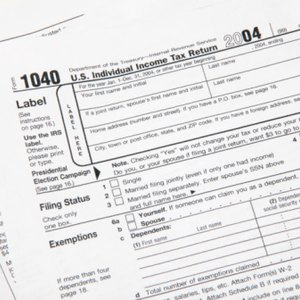
In the United States, personal trusts are set up for a variety of reasons, including providing a tax benefit to the grantor or trust creator, or the trust beneficiaries who are heirs of the grantor. This does not mean that funds within a trust or those withdrawn from one are tax free, only that the tax liability is constructed differently than that of personal income. There are two major categories of personal trusts: revocable and irrevocable. The tax treatment of each is different.
LIving Trusts
A revocable trust is one where the grantor is alive and retains the power to change or annul the trust at any time. He also maintains control over the assets, dictating how assets will be invested or distributed. In these cases, the IRS sees no difference between assets in the trust and those outside. All income generated on these assets is taxable to the grantor.
Irrevocable trusts are those that cannot be changed once they are established. If the grantor retains the ability to control the assets in any way -- usually by serving as her own trustee -- the trust is considered a grantor trust and income is taxable to the grantor.
If the grantor retains no right to the assets, the trust is considered a separate taxable entity and pays taxes on any income on its own tax identification number. A revocable trust becomes irrevocable upon the death of the grantor and is considered an individual taxable entity.
Probate and Estate Tax
Trusts do not have to go through probate court upon the death of the grantor, and often decrease estate tax by dividing marital assets to take full advantage of the Lifetime Unified Credit, an estate tax waiver for persons whose assets fall beneath a particular threshold.
Beneficiaries
Once a trust is declared irrevocable, it pays out distributions to beneficiaries. Income paid as a distribution is not taxable to the trust, but all payments to beneficiaries are considered part of the taxable income of the beneficiary. Trustees must issue an IRS Form K-1 to any beneficiary who has received a trust distribution during the year.
Paying the Tax
Trusts pay tax in two ways: quarterly during the year through an estimated income tax payment and at the end of the year on IRS Form 1041.
The estimated tax payments are calculated based on expected annual income and payments made on a quarterly basis. You do not have to pay tax if the trust's estimated annual income is less than $1,000 for the year. Payments are due on the fifteenth of April, June, September and January, although you can skip the January payment if the annual tax return is filed and paid by January 31. Filers use IRS Form 1041-ES for the estimated payments.
The annual return calculates the actual tax owed for the year and offsets that amount by the estimated payments. Filers pay additional tax if the estimated payments have been too low, or receive a refund if they were too high.
Warning
The IRS may impose penalties for incorrect tax payments on trust assets, including estimated tax payments that were too low. If you have been appointed trustee of a trust and are uncertain about your fiduciary responsibility, speak with an experienced estate planning attorney, accountant or financial planner.
References
- Save Wealth: Guide to Living Trusts
- IRS: Instructions for Form 1041 and Schedules A, B, G, J, and K-1
- IRS: 2010 Form 1041-ES
- IRS.gov. "Basic Trust Law." Accessed Aug. 29, 2020.
- IRS. "Tax Forms and Instructions, Tax Rate Tables," Page 10. Accessed Aug. 30, 2020.
- IRS. "IRS provides tax inflation adjustments for tax year 2020." Accessed Aug. 30, 2020.
Writer Bio
Nola Moore is a writer and editor based in Los Angeles, Calif. She has more than 20 years of experience working in and writing about finance and small business. She has a Bachelor of Science in retail merchandising. Her clients include The Motley Fool, Proctor and Gamble and NYSE Euronext.

